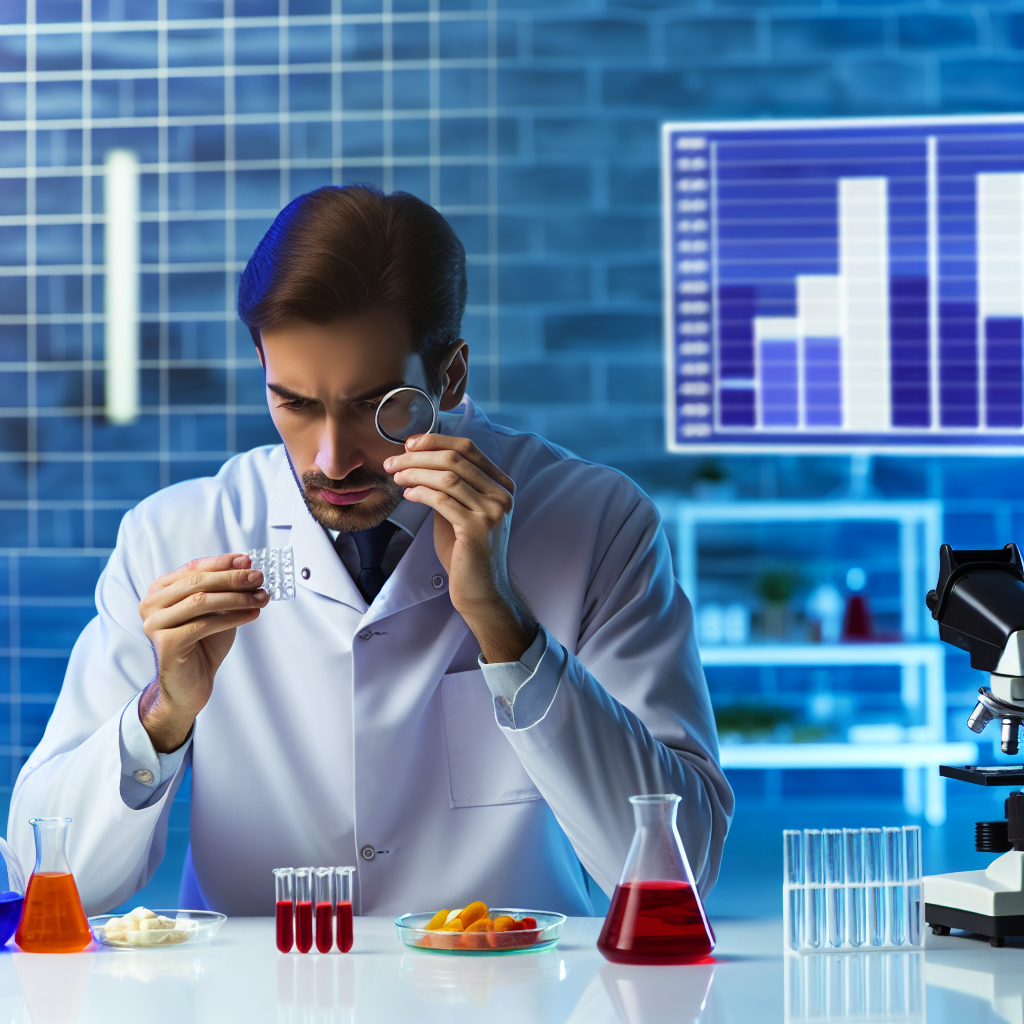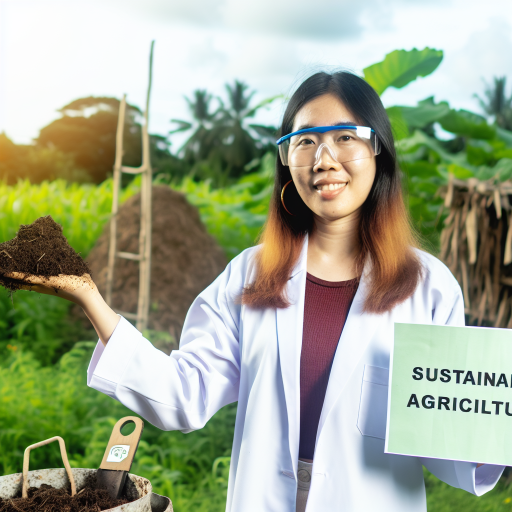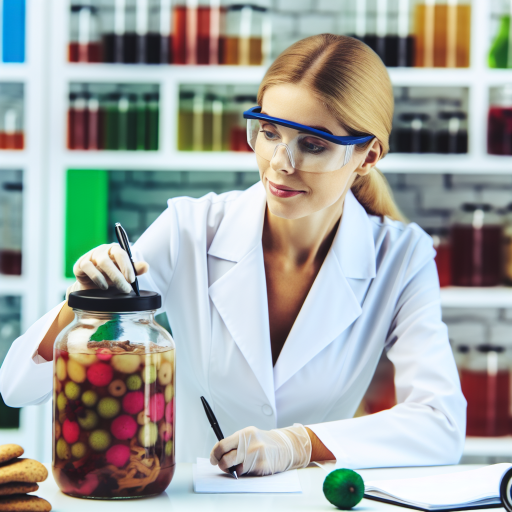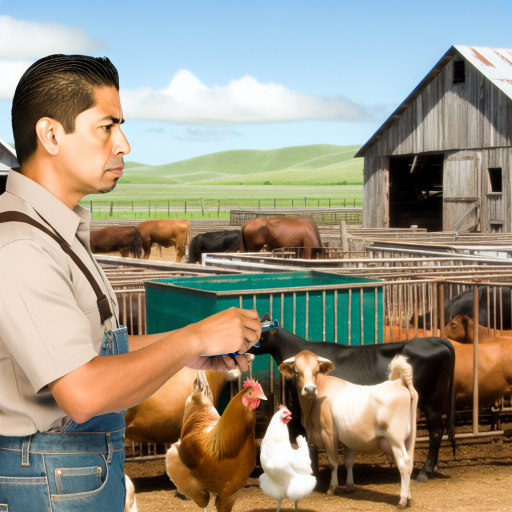Introduction:
Food safety testing is crucial to prevent health risks for consumers.
Food scientists ensure the safety of our food supply by conducting various tests.
What is food safety testing?
Food safety testing is the process of analyzing food products to ensure they are safe for consumption.
It involves detecting and eliminating harmful contaminants that may be present in the food.
Importance of ensuring that food is safe for consumption
Protects public health by preventing the spread of foodborne illnesses.
Ensures consumer confidence in the food supply chain.
Compliance with regulatory requirements to maintain food safety standards.
Different types of contaminants that can be present in food
Biological contaminants such as bacteria, viruses, and parasites.
Chemical contaminants like pesticides, heavy metals, and food additives.
Physical contaminants such as glass, metal, or plastic fragments.
Allergens that can trigger allergic reactions in sensitive individuals.
Food scientists play a crucial role in conducting food safety testing to protect the public from harmful contaminants in food products.
Methods used in food safety testing
Microbiological testing: Detects harmful bacteria, viruses, and parasites using culture-based methods or molecular techniques.
Chemical testing: Analyzes food samples for pesticide residues, heavy metals, and other chemical contaminants.
Allergen testing: Identifies the presence of allergenic proteins in food products to prevent allergic reactions.
Physical testing: Inspects food products for foreign objects like glass, metal, or plastic fragments.
Food scientists follow strict protocols and guidelines to ensure accurate and reliable results in food safety testing.
Steps involved in food safety testing
Sampling: Food samples are collected from different stages of the food supply chain for analysis.
Preparation: Samples are prepared and processed according to specific testing methods.
Analysis: Testing is performed using various techniques to detect contaminants in the samples.
Transform Your Career Today
Unlock a personalized career strategy that drives real results. Get tailored advice and a roadmap designed just for you.
Start NowInterpretation: Results are interpreted to determine the safety and quality of the food products.
Reporting: Findings are documented and reported to stakeholders for further action if necessary.
Food safety testing is a continuous process to monitor and ensure the safety of food products throughout the supply chain.
Challenges in food safety testing
Complex food matrices can interfere with the accuracy of testing results.
Rapid detection of contaminants is essential to prevent widespread foodborne outbreaks.
Lack of standardized methods and regulations can lead to inconsistent testing practices.
Limited resources and funding may hinder the implementation of comprehensive food safety testing programs.
Despite these challenges, food scientists strive to enhance food safety testing methods to protect public health and ensure the quality of food products.
Technological advancements in food safety testing
Automation: Robotic systems streamline sample processing and analysis for increased efficiency.
Molecular techniques: Polymerase chain reaction (PCR) and next-generation sequencing improve the detection of foodborne pathogens.
Nanotechnology: Nanosensors enable rapid and sensitive detection of contaminants in food samples.
Blockchain technology: Provides transparency and traceability in the food supply chain to enhance food safety.
By leveraging these technological innovations, food scientists can strengthen food safety testing practices and safeguard public health.
Ongoing Role of Food Scientists in Food Safety
Food safety testing is a critical aspect of ensuring the safety and quality of food products consumed by the public.
By utilizing advanced testing methods and technologies, food scientists can effectively detect and eliminate contaminants in food products.
Continuous monitoring and improvement of food safety testing practices are essential to protect public health and maintain consumer confidence in the food supply chain.
Food scientists play a key role in upholding food safety standards and regulations to prevent foodborne illnesses and ensure the safety of the global food supply.
Role of Food Scientists in Food Safety Testing
Food scientists play a crucial role in ensuring the safety of the food we consume.
Their responsibilities are varied and essential in maintaining the quality and safety of the food supply chain.
Showcase Your Business Today
Reach thousands of readers actively exploring professional services. Publish your business profile and grow your audience now.
Publish NowResponsibilities of Food Scientists in Conducting Food Safety Testing
- Developing and implementing food safety protocols and procedures
- Conducting microbiological and chemical analyses of food samples
- Identifying and evaluating potential hazards in food products
- Collaborating with food production facilities to improve safety measures
- Ensuring compliance with regulatory standards and guidelines
Importance of Their Expertise in Detecting Potential Risks and Ensuring Food Safety
Food scientists are equipped with the knowledge and skills to detect potential risks in the food supply chain.
By utilizing their expertise, they can identify and mitigate risks before they become a threat to public health.
Through conducting thorough testing and analysis, food scientists can prevent foodborne illnesses and outbreaks by identifying contaminants and pathogens that may be present in food products.
Their expertise is essential in protecting consumers from foodborne illnesses and ensuring the overall safety and quality of the food supply.
Collaboration with Regulatory Agencies to Establish Safety Standards
Food scientists work closely with regulatory agencies such as the FDA and USDA to establish safety standards and guidelines for the food industry.
By collaborating with these agencies, food scientists can ensure that food production facilities comply with safety regulations and meet quality standards.
They provide valuable input and expertise in developing and updating safety regulations to address emerging food safety challenges and risks.
Uncover the Details: Common Tools Used by Seed Technologists
Methods Used in Food Safety Testing
Food scientists employ various techniques to ensure food safety and quality.
These methods are crucial in detecting contaminants or pathogens that may pose health risks to consumers.
Here is an overview of some common techniques used by food scientists:
Microbiological Testing
- Microbiological testing involves analyzing samples for the presence of harmful bacteria, viruses, molds, and yeasts.
- Food scientists use techniques such as culturing, PCR (polymerase chain reaction), and immunoassays to detect microbial contaminants.
- Microbiological testing helps in identifying pathogens like Salmonella, E. coli, Listeria, and Campylobacter.
Chemical Analysis
- Chemical analysis is used to detect harmful chemicals, pesticides, additives, and preservatives in food products.
- Food scientists utilize methods such as chromatography, spectrophotometry, and mass spectrometry for chemical analysis.
- This testing helps in detecting contaminants like heavy metals, mycotoxins, and pesticide residues.
Allergen Testing
- Allergen testing is crucial for identifying the presence of allergenic proteins in food products.
- Food scientists use ELISA (enzyme-linked immunosorbent assay) and PCR techniques to detect allergens like peanuts, gluten, and soy.
- This testing is vital for ensuring food labeling accuracy and preventing allergic reactions in sensitive individuals.
Molecular Testing
- Molecular testing involves analyzing DNA or RNA sequences to identify specific genetic markers in food samples.
- Food scientists use techniques like PCR, DNA sequencing, and genotyping for molecular testing.
- This method helps in verifying food authenticity, detecting GMOs, and tracking foodborne illness outbreaks.
Physical Inspection
- Physical inspection involves visually examining food products for signs of contamination, spoilage, or foreign objects.
- Food scientists use tools like microscopes, magnifiers, and colorimeters for physical inspection.
- This testing aids in detecting physical hazards like glass shards, insects, and plastic fragments in food products.
These methods play a crucial role in ensuring that food products are safe for consumption.
By employing a combination of microbiological, chemical, allergen, molecular, and physical testing, food scientists can effectively detect contaminants.
They are dedicated to upholding food safety standards.
Discover More: Common Tools Used by Agricultural Quality Inspectors
Testing for Microbial Contamination
Microbial contamination in food is a serious concern for food scientists as it can lead to foodborne illnesses.
Testing for bacteria, viruses, and other microorganisms is crucial to ensure food safety and quality.
Importance of Testing for Bacteria, Viruses, and Other Microorganisms in Food
- Prevention of foodborne illnesses: Identifying and eliminating harmful microorganisms can prevent the spread of foodborne illnesses.
- Quality control: Testing for microbial contamination ensures the overall quality and safety of food products.
- Regulatory compliance: Food safety regulations require rigorous microbial testing to meet industry standards.
Overview of Methods Used to Detect Microbial Contamination
Food scientists use a variety of methods to detect microbial contamination in food.
Some common techniques include:
- Microbiological culture: This method involves culturing samples in a lab to identify and quantify microorganisms present.
- Molecular techniques: Polymerase chain reaction (PCR) and next-generation sequencing are used to detect specific DNA sequences of harmful bacteria or viruses.
- Immunoassays: Enzyme-linked immunosorbent assays (ELISA) identify specific antigens or antibodies related to microbial contamination.
Explanation of How Food Scientists Analyze and Interpret Test Results to Determine Safety Levels
Once test results are obtained, food scientists must analyze and interpret the data to determine the safety levels of the food products.
This involves:
- Comparing results to safety standards: Test results are compared to regulatory safety standards to ensure compliance.
- Quantifying microbial load: Scientists quantify the number of microorganisms present in the sample to assess contamination levels.
- Identifying pathogens: Specific pathogens are identified to determine if they pose a risk to human health.
- Implementing corrective actions: If contamination levels exceed safety thresholds, corrective actions are taken to prevent microbial growth.
Testing for microbial contamination is a critical aspect of food safety testing conducted by food scientists.
By using advanced techniques and interpreting results accurately, food scientists can ensure that the food we consume is safe and free from harmful microorganisms.
See Related Content: Quality Control Inspector: Ensuring Product Compliance
Testing for chemical contaminants
Chemical contaminants in food can pose serious health risks to consumers if not detected and controlled.
Food scientists play a crucial role in ensuring the safety of our food supply by conducting rigorous testing for various chemical contaminants.
In this section, we will discuss the common chemical contaminants found in food, the testing methods used by food scientists to detect these contaminants, and the importance of accurate testing to prevent health risks and ensure food safety.
Overview of common chemical contaminants found in food
- Pesticides: These chemicals are used in agriculture to protect crops from pests but can contaminate food if not used properly.
- Heavy metals: Metals like lead, mercury, and arsenic can enter the food supply through water, soil, or industrial pollution.
- Food additives: Artificial colors, flavors, and preservatives can sometimes pose health risks if consumed in large quantities.
- Environmental contaminants: Pollutants like polychlorinated biphenyls (PCBs) and dioxins can accumulate in food through air and water contamination.
Explanation of testing methods used by food scientists to detect chemical contaminants
Food scientists employ a variety of testing methods to detect chemical contaminants in food.
These methods are designed to be sensitive, accurate, and efficient in identifying even trace amounts of contaminants.
Some common testing methods include:
- Gas chromatography-mass spectrometry (GC-MS): This technique separates and analyzes compounds in a sample to identify and quantify chemical contaminants.
- High-performance liquid chromatography (HPLC): HPLC is used to separate, identify, and quantify components in complex mixtures like food samples.
- Immunoassays: These tests use antibodies to detect specific contaminants like pesticides or toxins in food samples.
- Atomic absorption spectroscopy (AAS): AAS measures the concentration of metals like lead or mercury in food samples through their absorption of light.
By combining these and other advanced testing methods, food scientists can accurately detect and quantify chemical contaminants in food, ensuring that only safe products reach consumers.
Importance of accurate testing to prevent health risks and ensure food safety
Accurate testing for chemical contaminants is essential to prevent health risks and ensure the safety of our food supply.
Here are some reasons why accurate testing is crucial:
- Protecting consumer health: Detecting and controlling chemical contaminants in food can prevent illnesses, allergic reactions, and long-term health effects.
- Compliance with regulations: Food manufacturers must comply with strict regulations on chemical contaminants to ensure the safety and quality of their products.
- Building consumer trust: Accurate testing demonstrates a commitment to food safety, which can help build trust and loyalty among consumers.
- Preventing economic losses: Food recalls and health scares due to chemical contamination can lead to financial losses for food companies and the industry as a whole.
Food scientists play a critical role in testing for chemical contaminants to protect consumer health, comply with regulations, build trust, and prevent economic losses.
By utilizing advanced testing methods and ensuring accuracy in their analyses, food scientists contribute to a safer and more secure food supply for all.
Gain More Insights: Veterinary Collaborations in Dairy Science

Quality Control Measures in Food Safety Testing
Quality control is essential in food safety testing to ensure the reliability and accuracy of test results.
Implementing strict quality control measures is crucial in upholding the integrity of testing procedures and maintaining food safety standards.
Explanation of the Need for Quality Control
Quality control is necessary to identify any potential errors or inconsistencies in testing protocols that could compromise the accuracy of results.
By implementing quality control measures, food scientists can minimize the risk of faulty data and ensure the validity of their findings.
Showcase Your Business Today
Reach thousands of readers actively exploring professional services. Publish your business profile and grow your audience now.
Publish NowFurthermore, quality control helps to standardize testing procedures, ensuring consistency in methodologies and results across different testing labs.
This uniformity is critical in establishing reliable benchmarks for food safety evaluation and comparison.
Overview of How Food Scientists Implement Quality Control Measures
Food scientists employ various strategies to implement quality control measures in food safety testing.
One common approach is the use of control samples, which are known substances with predetermined properties used to validate testing procedures.
Additionally, regular calibration of equipment and instruments is essential to maintain accuracy and precision in testing.
Calibration ensures that measurements and analyses are consistent and reliable, reducing the potential for errors and inaccuracies.
Training and proficiency testing for laboratory personnel are also key components of quality control.
By ensuring that staff members are well-trained and knowledgeable in testing procedures, food scientists can uphold high standards of quality and reliability in their work.
Importance of Adherence to Quality Control Standards
Adherence to quality control standards is paramount in maintaining food safety and protecting public health.
By consistently following established protocols and guidelines, food scientists can minimize the risk of contamination, spoilage, and other safety hazards in food products.
Furthermore, adherence to quality control standards helps to build trust and credibility in the food industry.
Consumers, regulatory agencies, and other stakeholders rely on accurate and reliable testing data to make informed decisions about food safety, quality, and compliance.
Quality control measures play a crucial role in ensuring the integrity and reliability of food safety testing.
By upholding strict quality control standards, food scientists can effectively identify and mitigate potential risks, safeguard public health, and maintain confidence in the safety and quality of food products.
Regulatory Compliance in Food Safety Testing
When it comes to ensuring the safety of the food that we consume, regulatory compliance is of utmost importance.
Regulatory agencies play a crucial role in setting and enforcing food safety standards to protect public health.
Overview of Regulatory Agencies
- The Food and Drug Administration (FDA) is one of the primary regulatory agencies responsible for establishing food safety standards in the United States.
- The United States Department of Agriculture (USDA) also plays a significant role in regulating meat, poultry, and egg products.
- Internationally, the World Health Organization (WHO) and the Food and Agriculture Organization (FAO) work together to establish global food safety guidelines.
Compliance with Regulations
- Food scientists must adhere to strict regulations set forth by these agencies when conducting food safety testing.
- They must follow standardized protocols and procedures to ensure the accuracy and reliability of their test results.
- Proper documentation and record-keeping are essential to demonstrate compliance with regulatory requirements.
Importance of Following Guidelines
- Adhering to regulatory guidelines is critical in ensuring the safety of the food supply chain and protecting public health.
- Failure to comply with regulations can lead to foodborne illness outbreaks and tarnish the reputation of food manufacturers.
- By following established guidelines, food scientists contribute to maintaining the integrity and safety of the food industry.
Regulatory compliance is a key aspect of food safety testing that food scientists must prioritize.
By following guidelines set by regulatory agencies, they play a crucial role in safeguarding public health and ensuring the safety of the food we consume.
Food Safety Testing Process
Food scientists first collect samples of food products for testing.
Initial Screening
They conduct initial screenings to detect any potential contaminants.
Laboratory Analysis
Next, they perform laboratory analyses using advanced equipment.
Microbiological Testing
Microbiological testing is carried out to check for harmful bacteria.
Chemical Analysis
Chemical analysis helps identify any toxic substances present in the food.
Allergen Testing
Allergen testing ensures the absence of allergens in the food product.
Shelf-Life Testing
Food scientists also conduct shelf-life testing to determine product longevity.
Final Evaluation
Based on the results, they make recommendations for necessary actions.
Importance of Food Safety Testing
Food safety testing is crucial for ensuring the safety of our food supply.
We appreciate the role of food scientists in conducting testing and maintaining food safety standards.
Additional Resources
Food, Bioprocessing and Nutrition Sciences
The Current US Food Safety System – Ensuring Safe Food – NCBI …
[E-Books for Sale]
The Big Book of 500 High-Paying Jobs in America: Unlock Your Earning Potential
$19.99 • 500 High-Paying Jobs • 330 pages
Explore 500 high-paying jobs in America and learn how to boost your career, earn more, and achieve success!
See All 500 High-Paying Jobs of this E-Book
1001 Professions Without a Degree: High-Paying American Jobs You Can Start Now
$19.99 • 1001 Professions Without a Degree • 174 pages
Discover 1001 high-paying jobs without a degree! Unlock career tips, skills, and success strategies for just $19.99!




